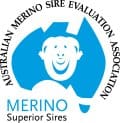 WOOL producers can assess potential sires for a wider range of visual and genetic traits in the 2015 edition of Merino Superior Sires released yesterday.
WOOL producers can assess potential sires for a wider range of visual and genetic traits in the 2015 edition of Merino Superior Sires released yesterday.
The Australian Merino Sire Evaluation Association publication includes sire evaluation results for the 2010-2014 drops on nine sites across Australia, including Merino Production, Dual Purpose and Fibre Production index rankings of the top 50 sires.
AMSEA executive officer Ben Swain said the “new traits,” which include fat (Fat) and eye muscle depth (EMD) are now routinely scored at all sire evaluation sites and have been included for the first time.
“We’ve also included some different stages for other traits, like yearling fleece weight and adult fleece, which is line with what we are doing with the lifetime productivity trial.”
“We’ve also got yearling body weight as well as adult body weight.”
These fleece and body weight traits had previously been reported at the hogget stage, Mr Swain said. There was not enough data to yet report accurate post-weaning fleece traits, nor was numbers of lamb weaned data for sires being reported, although it would be in the lifetime project.
“But as part of the lifetime productivity trial we are recording post-weaning fleece weights and post-weaning body weight to boost the amount of data in the database.”
Merino Superior Sires enables visual and genetic selection
Mr Swain said breeders were looking at measuring a much broader range of traits at a wider range of ages to suit their breeding objectives. He expected the new age stage data on fleece and carcase traits to attract interest.
“The wider range of traits will suit more breeding objectives; pretty much all Merino producers will be able to get something out of it, regardless of their breeding objectives.”
Merino Superior Sires is used widely as a semen catalogue and to identify independently progeny-tested sires that have also been assessed for a range of visual traits, Mr Swain said.
“In Merino Superior Sires you can get an overview of the sires’ visual aspects from their tops and culls and their wool quality and conformation indexes, then you can drill down into the site reports on the (AMSEA) website and get a real detailed account of a sire’s progeny’s visual traits.
“If you are using semen from a sire he might tick all the ASBV boxes and be the trait leader for the index you are looking for, but if you can’t make sure he is not throwing bad feet or bad jaws, that’s a bit of a problem,” he said.
“Merino Superior Sires allows you to do that.”
Sire report targets Merino industry markets
AMSEA chairman Tom Silcock said the data on a range of new traits positioned Merino Superior Sires to better cater for the wide range of breeding objectives and target markets found in the Merino industry.
“Further enhancements to the publication include highlighting sires that are new to Merino Superior Sires, and the results tables reflect sires’ performance at a greater range of stages.”
He said the newly enhanced Merino Superior Sires offers the Merino industry a unique source of independent information, catering to both visual and measured performance requirements.
To find out more about Merino Sire Evaluation and read the latest results, go to the download reports section of www.merinosuperiorsires.com.au.
Hard copies of Merino Superior Sires are being distributed in the near future. If you do not normally receive a copy and would like to, or have any questions in relation to Merino Superior Sires, please contact: Ben Swain, AMSEA executive officer, mobile 0427 100 542, telephone (02) 6743 2306, fax (02) 6743 2307 and email [email protected]
Source: AMSEA

HAVE YOUR SAY